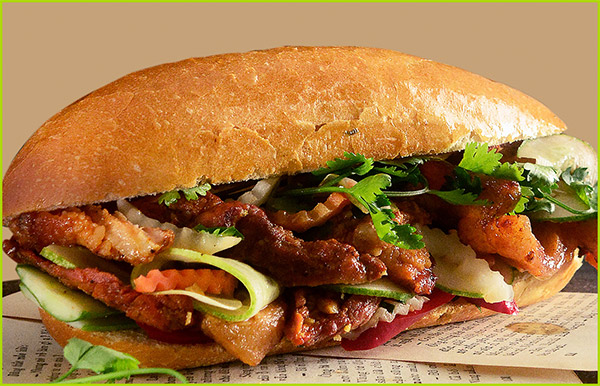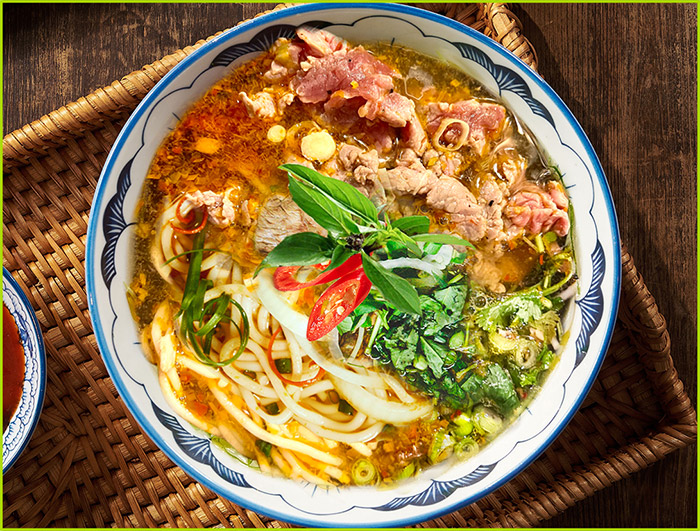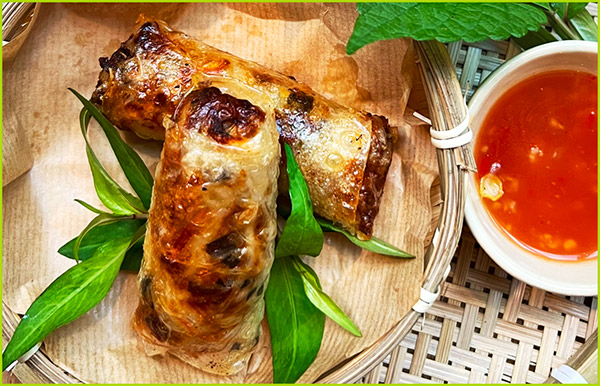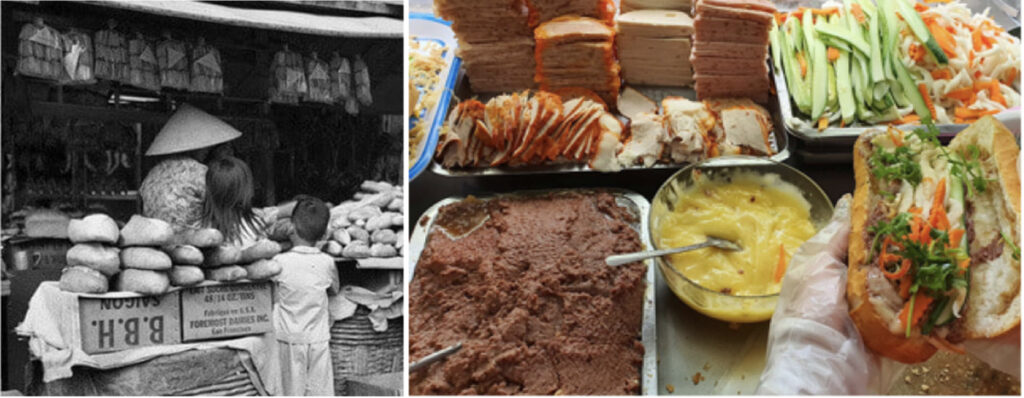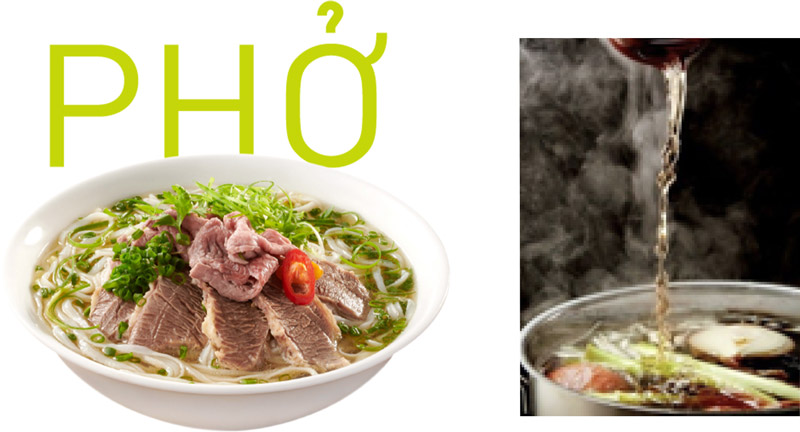The famous bánh mì sandwich as we know it today only came about after the French defeat at Dien Bien Phu in 1954. It was first born in Saigon when Vietnam split into two countries, approximately one million northerners fled south. After the French left, Vietnamese modified it with local ingredients for the taste of the majority Vietnamese.
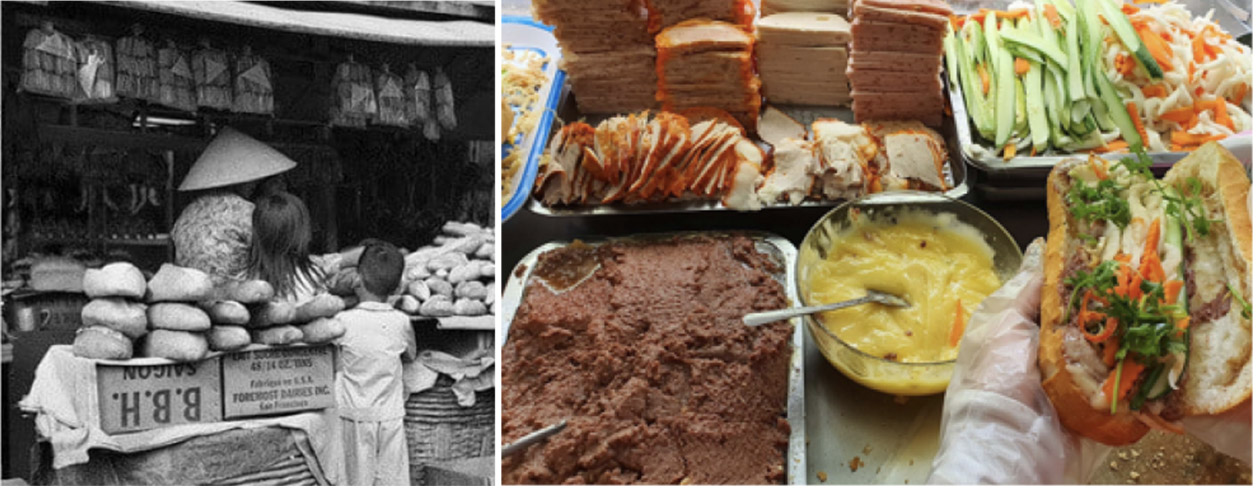
The bánh mì sandwich revolutionized dining in Saigon perfect for the hustle of life in the modern world. Thanks to American wheat shipments and the change to local ingredients, the bánh mì sandwich grew immensely popular. It was and still is a cheap meal, rich in both flavor and calories. New food carts and restaurants popped up all over the Republic of Vietnam, which was then the name of South Vietnam. Bakeries opened as well to supply the bread. An entirely new industry grew to supply people with bánh mì sandwiches.
In March 2011, the word Bánh Mì was recorded in Oxford Dictionary. The toppings inside a bánh mì are all combined in a harmony and balance with sweet and sour pickles, egg butter, pork ham, paté, sauce, chili…This was the very first traditional version of Bánh Mì.
Later on, the Vietnamese created many versions: sunny-side up egg bánh mì, shredded chicken bánh mì, grilled beef bánh mì, pork belly bánh mì, chasiu bánh mì, fish cake bánh mì, meat ball bánh mì, totu bánh mì… All of these versions give customers a lot of choices, in an healthy, convenient and economic way so that anyone can afford to buy.

The history of phở begins at the end of the 19th century, at the peak of French colonialism. French demand led to a greater availability of beef in Vietnam. This in turn produced a surplus of beef bones, which were used by Chinese and Vietnamese vendors to deepen and perfect the flavour of the Nam Dinh broth. Like Vietnam itself, phở has undergoneimpactful changes.

Privation during hard times resulted in meagre bowls of soup hitting the streets. The most divisive shake up occurred when phở moved south along with millions of northerners following the partition of the country in 1954. Beef bones, flank steak oxtails, charred onion, charred ginger and spices including star anise, cinnamon, cloves, black cardamom and coriander are used to make the slow-cooked broth. In the north, garnishe are limited to fresh chilli slices, lemon, and a few herbs; but in the south, the phở is noticeably sweeter and there’s a wide array of types to choose from.
Phở is considered as the national dish of Vietnam, and it has captured the fascination of so many people in the west because of its deceptive simplicity and its complex flavors. Phở is the perfect comfort food – warm, hearty and deliciously refreshing. In Vietnam it’s the common people’s food. It’s street food.
Phở flourished, and due to its versatility and popularity, Vietnamese eat pho everyday, atany time during the day. Phở vendors do business everywhere, from pushcarts to neighborhood street stalls, from pho restaurants to elegant bistros. But most importantly, pho is the food of the working people.

The origin of bun bo Huefrom Hue, in Central Vietnam. This noodle dish is an important part of the local culture, and is often considered the quintessential example of Central Vietnamese cuisine. In Hue, bun bo is a popular breakfast food and is known for its clear broth, made from dried baby shrimp and pork legs, which gives it a subtle sweetness. A typical bowl of bun bo Hue includes crab cakes, sliced beef well and rare cooked, along with fresh vegetables and herbs such as lettuce, Vietnamese basil, banana flowers, and fish mint. One of the unique features of bun bo Hue is its spicy and salty flavor, which is created through the use of homemade chili and lemongrass sauté, as well as a spicy dipping sauce made from fish sauce and sliced fresh chilies. The strong flavor profile of bun bo Hue is believed to be linked to the local climate and culinary traditions, as the people of Central Vietnam must deal with extreme weather conditions, including rain, flooding, and cold winds. This rich history and cultural significance add to the unique flavor of bun bo Hue.
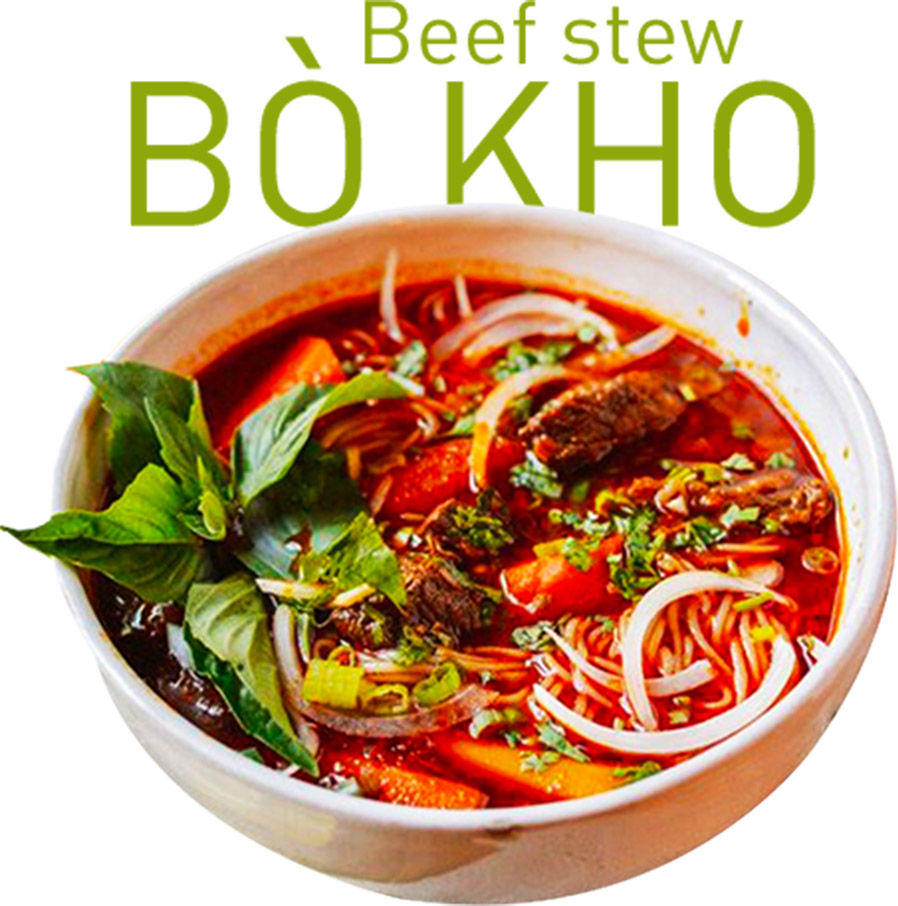
The origin of Vietnamese beef stew, or Bò kho, can be traced back to many years ago. Originating in Southern Vietnam. Bò means beef and kho means simmered. The dish’s lin eage is most likely Gallic in part, since beef was introduced to Vietnam by French colonists. It is also commonly served with crisp baguettes, another French contribution. It may even resemble the classic pot-au-feu or boeuf aux carottes, but it is undeniably Viet- namese, heavily perfumed with lemongrass, star anise and cinna- mon, along with plenty of ginger, a touch of Chinese five-spice powder and just the right amount of hot pepper. These aromatics infuse both meat and sauce with heavenly flavor. This famous Vietnamese food is made with succulent beef cooked in a richly- flavored soup that brings together an array of spices. And not just popular among locals, Vietnam- ese beef stew has been recognized globally.
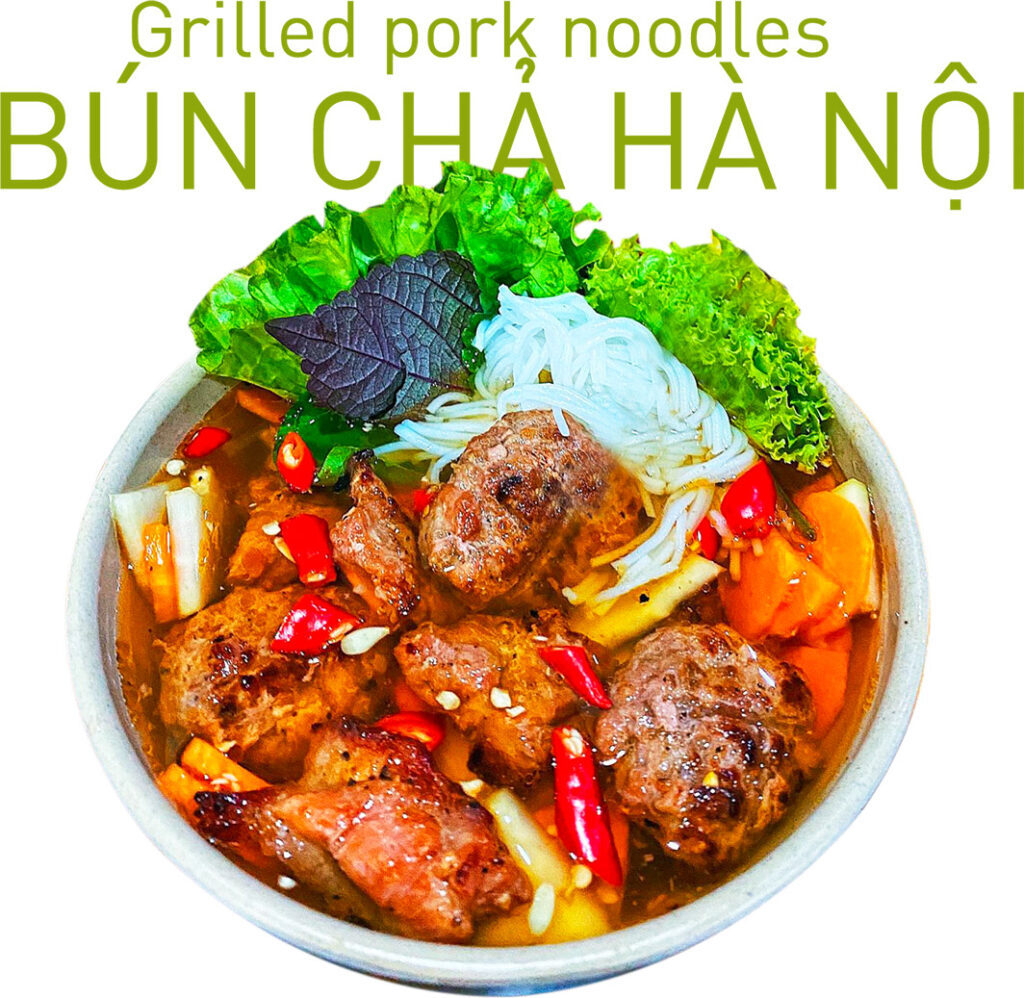
Bún chả Hanoi is a Vietnamese dish of grilled pork and noodles, which is originated from Hanoi, Vietnam. Bún chả is served with grilled fatty pork (chả) over a plate of white rice noodles (bún) and herbs with a side dish of dipping sauce. The dish was described in 1959 by Vietnamese food writer Vu Bang (1913–1984), who described Hanoi as a town “transfixed by bún chả.” Hanoi’s first bún chả restaurant was on Gia Ngư, Hoàn Kiếm District, in Hanoi’s Old Quarter.
Bún chả originated from and remains very popular in Hanoi and throughout Vietnam. Although it is a common misconception among non-Vietnamese diners that bún chả is related to the Southern Vietnam dish of vermicelli and grilled skewered pork called bún thịt nướng, the two dishes are completely distinct in both culinary history and cultural perception.
Bún Chả became even more famous after United States President Barack Obama dined in a restaurant in Hanoi with Chef Anthony Bourdain while he was on his trip to Vietnam in May 2016.
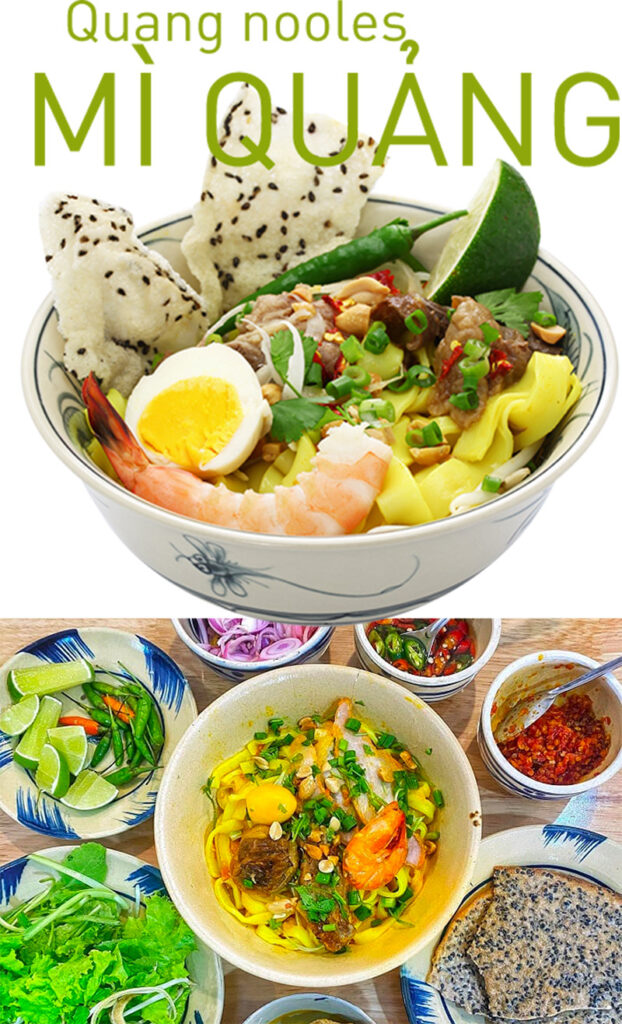
Mì Quảng first appeared in the 16th century. Under the reign of the Nguyen Dynasty, Hoi An was an important trading port in Asia. The Chinese people brought their method of making noodles into Vietnam. Thus, the local people learned how to make Chinese noodles and applied modifications to make their own variation of noodles, called Mì Quảng, and made it popular all over the province. The traditional Chinese noodle is made from wheat, while the Vietnamese mi quang uses rice flour instead.
Mì Quảng is a popular noodle dish originates from the Quảng Nam province in central Vietnam. The dish is believed to have evolved over centuries, drawing influences from the diverse culinary traditions of the region.
The base of the dish is made with a unique type of wide, turmeric-colored rice noodles. In addition to the noodles, Mì Quảng typically includes a flavorful broth made from a combination of pork, shrimp, and fish. The specific blend of proteins and seasonings used in the broth may incorporate techniques and ingredients that have roots in Vietnamese culinary traditions
The dish is also characterized by its diverse array of toppings, which often include sliced pork, shrimp, roasted peanuts, fresh herbs, and a variety of crunchy vegetables such as bean sprouts and chopped lettuce. This diversity of ingredients and textures is thought to reflect the region’s agricultural abundance and the cooks’ creativity in blending various local produce and proteins.
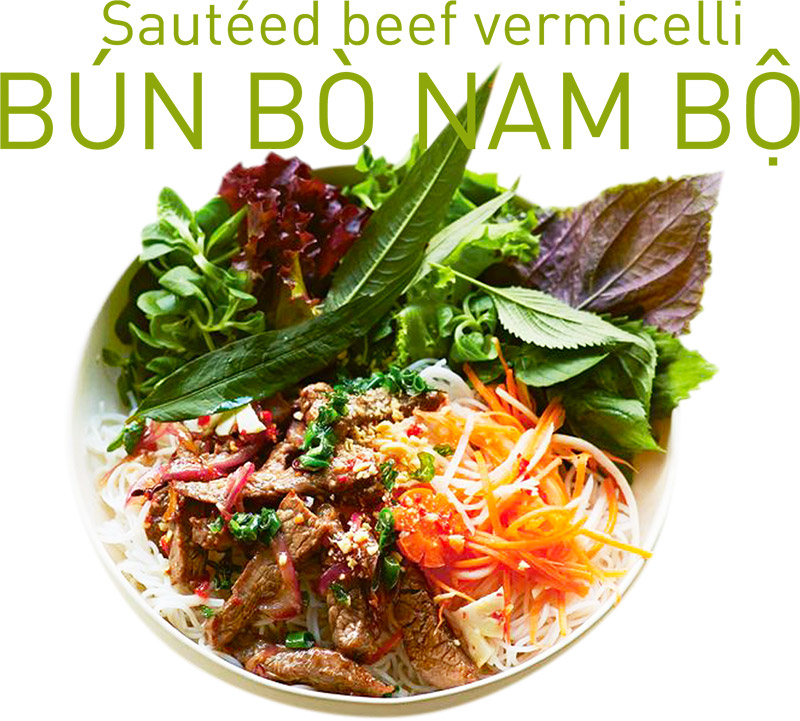
The first restaurant selling this noodle dish was located on the sidewalk of Dong Loi Hotel on Nam Bo Street (later renamed Le Duan Street), opened in the 80s of the last century. This dish was originally called mixed beef noodles. Overtime, people called it strir fried beef nooldes on Nam Bo street or Nam Bo beef noodles.
Bun bo nam bo is a traditional Vietnamese dish. The name holds a key to its basic ingredients and the location – bun means noodle, bo is for beef, and nam bo refers to the South of the country. The main ingredients include beef, rice vermicelli noodles, garlic, fresh herbs (cilantro, mint), and vegetables (carrots, cucumbers, lettuce, bean sprouts), while roasted peanuts and fried shallots are entirely optional.
The noodles, vegetables, and herbs are arranged in bowls, while the beef is stir-fried and added on top. The whole bowl is garnished with peanuts and shallots before the dish is served.


